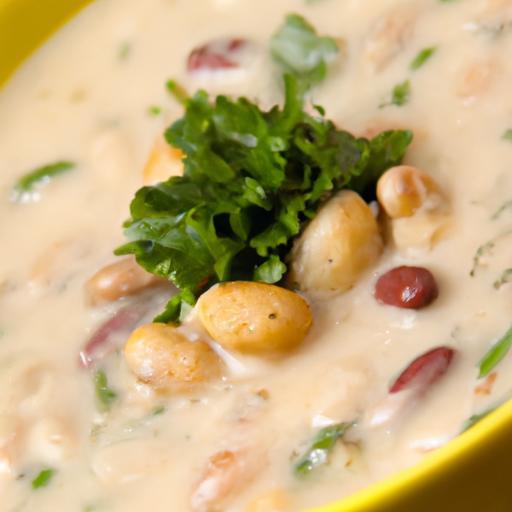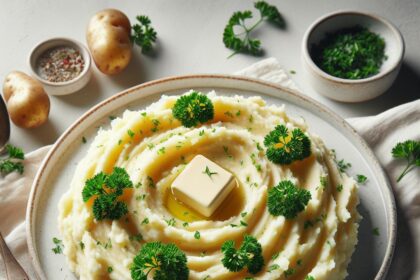When the fridge starts to resemble a science experiment and the clock is ticking on those half-forgotten veggies and stray bits of cheese, it’s time to get creative in the kitchen. Welcome to “Soup’s On! Creative Recipes to Clear Your Fridge Leftovers,” where we turn your culinary castoffs into comforting, crowd-pleasing bowls of warmth. Soups are the unsung heroes of leftover rescue-one pot, endless possibilities, and zero waste. From vibrant veggie medleys to unexpected flavor fusions, this article will inspire you to transform yesterday’s odds and ends into today’s delicious masterpiece. So grab that wilting carrot and those lonely herbs-it’s soup o’clock, and the fridge refresh starts here!
Transforming Odds and Ends into Flavorful Broths with Secret Ingredients That Elevate Every Soup
Soup’s On! Creative Recipes to Clear Your Fridge Leftovers begin with the magic of transforming humble odds and ends into deeply flavorful broths that serve as the heart of every soup. Whether it’s vegetable peels, chicken carcasses, or aromatic herb stems, these often overlooked bits carry incredible taste potential just waiting to be unlocked. The beauty lies in layering subtle nuances-adding secret ingredients like a splash of soy sauce, a hint of miso paste, or a pinch of toasted spices-these elevate a simple broth into a rich, complex foundation that sings with every spoonful.
Prep and Cook Time
- Preparation Time: 15 minutes
- Cooking Time: 1 to 3 hours (depending on broth type)
Yield
- Approximately 6 cups of broth (enough for 4-6 soup servings)
Difficulty Level
- Easy to Medium
Ingredients
- 2 cups assorted vegetable scraps (carrot ends, onion skins, celery leaves)
- 1 chicken carcass or 2 cups trimmed meat bones (optional for non-vegetarian broth)
- 1 tablespoon olive oil (for roasting bones or veggies)
- 8 cups cold water
- 2 cloves garlic, smashed
- 1 small onion, quartered
- 1 teaspoon whole black peppercorns
- 2 bay leaves
- 1 teaspoon soy sauce or tamari (secret umami booster)
- 1 tablespoon miso paste (added off heat for depth)
- Fresh herbs for garnish (such as parsley, chives, or cilantro)
- Salt to taste
Instructions
- Prepare your scraps: Gather all vegetable odds and ends and bones. Rinse them gently to remove dirt but don’t peel off their skins-they hold flavor!
- Roast (optional but recommended): Preheat the oven to 400°F (200°C). Toss bones and vegetables with olive oil on a baking sheet, roast for 30 minutes until browned. This caramelization adds complexity and richness.
- Start the broth: Transfer roasted ingredients to a large stockpot. Add garlic, onion, peppercorns, and bay leaves. Pour in cold water to cover everything by 1-2 inches.
- Simmer slowly: Bring to a gentle boil, then reduce heat to low and simmer uncovered for 1-3 hours. Skim off any foam or impurities from the surface periodically for a clearer broth.
- Strain carefully: Using a fine mesh strainer, drain solids well. Discard scraps; keep the clear, fragrant broth.
- Enhance with secret ingredients: Stir in soy sauce or tamari for that umami hit. Remove from heat.
- Finish with miso: Whisk miso paste into a small ladle of warm broth, then combine back into pot. Avoid boiling the miso or it will lose its live cultures.
- Taste and adjust: Season with salt, and add fresh herbs just before serving for brightness and contrast.
Tips for Success
- Keep a zipper bag in your freezer to save vegetable scraps and bones until you have enough for broth.
- If you want a clearer broth, strain twice through a cheesecloth-lined sieve.
- Don’t rush the simmering process; slow extraction brings out the richest flavor without bitterness.
- Use a heavy-bottomed pot to maintain consistent heat and avoid scorching.
- To make the broth vegetarian, simply omit bones and boost umami with dried mushrooms or seaweed.
- The broth freezes beautifully for up to 3 months; store in airtight containers for easy meal prep.
Serving Suggestions
Present your homemade broth as a simple, soul-warming soup garnished with contrasting textures like toasted seeds or crunchy croutons. Add a swirl of yogurt or a drizzle of chili oil for color and spice. For leftover soups, innovative toppings like crispy fried shallots, fresh microgreens, or a grating of aged cheese can revive flavors beautifully. Slices of warm crusty bread with herb butter transform each bowl into a satisfying meal perfect for cozy evenings or quick lunches.
| Nutrient | Per 1 cup (240ml) |
|---|---|
| Calories | 45 |
| Protein | 4g |
| Carbohydrates | 3g |
| Fat | 1.5g |
Discover more inventive soup recipes to make your fridge solutions effortless and delicious. For further inspiration on flavor layering, consult the Serious Eats guide on Umami, a trusted source for culinary fundamentals.

Q&A
Q&A: Soup’s On! Creative Recipes to Clear Your Fridge Leftovers
Q1: Why is turning leftovers into soup a great idea?
A1: Soups are the ultimate fridge-cleaners! They’re flexible, forgiving, and downright delicious. By blending various leftovers into a warming bowl, you reduce waste, save time, and create something new and nourishing from ingredients that might otherwise be forgotten.
Q2: What kinds of leftovers work best for soup?
A2: Almost anything! Vegetables that are wilting, bits of cooked meat or poultry, grains like rice or quinoa, and even small amounts of cheese or pasta can find a new life in soup. The key is to balance flavors and textures-think savory vegetables, a protein hit, and some carbs to make it filling.
Q3: How can I make a soup that’s both tasty and balanced using random leftovers?
A3: Start with a flavorful base-onions, garlic, herbs, and broth or stock. Layer in your leftovers based on cooking times; harder veggies first, softer ones later. Add seasoning gradually, tasting as you go. Acidic touches like lemon juice or vinegar can brighten the flavors. Don’t forget a little fat, such as olive oil or butter, to round everything out.
Q4: Are there any pro tips for storing and reheating leftover soups?
A4: Absolutely! Cool your soup quickly and store it in airtight containers in the fridge for up to 3-4 days or freeze for longer. When reheating, do it gently on the stove or microwave, stirring occasionally to heat evenly. Sometimes adding a splash of broth or water helps refresh the texture.
Q5: Can leftover soups be repurposed again?
A5: You bet! Leftover soup can transform into stews, sauces for pasta or grains, or even a base for casseroles. Freeze in portions so it’s ready to jazz up your next meal with minimal effort.
Q6: What’s the most creative leftover soup you’ve tried or recommend?
A6: A “Fridge Cleanser Minestrone” – a mix of any available beans, leftover roasted vegetables, bits of pasta or rice, and a handful of greens tossed in a bright, herby tomato broth. It’s a colorful, hearty masterpiece born out of necessity that tastes like a treat!
Q7: Where can I find more inspiration for leftover soup recipes?
A7: Check out foodie blogs, sustainable cooking websites, and community forums where leftover soup recipes and tips abound. Personalizing your creations keeps your meals exciting and eco-friendly! Happy soup making!
Future Outlook
As the final spoonful disappears and your bowl is empty, so too are the lonely bits and bobs of yesterday’s fridge adventure-no longer forgotten, but transformed into a comforting, soul-warming masterpiece. With a little creativity and a dash of culinary curiosity, those odds and ends become the stars of the show, proving that waste is just opportunity in disguise. So next time your fridge whispers tales of forgotten treasures, remember: soup’s on, and the recipe for brilliance is simply to simmer, stir, and savor. Your leftovers never stood a chance.








